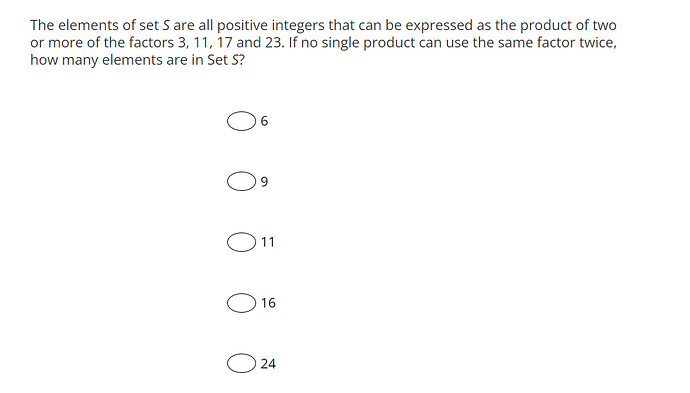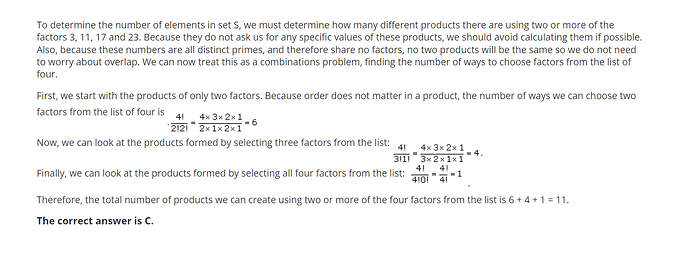While attempting to solve this question, I followed the exact process shown in the solution. However, I was also thinking that 1 is a factor of each prime, so shouldn’t there be 11 + 4 products = 15 products possible? The last 4 products will come from simply multiplying 1x3 ; 1x11 ; 1x17 ; 1x23? Isn’t that technically also product of 2 factors?
Hey @user2402 , I understand where the confusion might be coming from. If we read the text carefully it says element should be expressed as the product of two or more of the factors 3, 11, 17 and 23 and not factors of 3,11,17 and 23 so basically it is not asking you to create product using factors of 3, 11, 17 and 23. If that was the case then yes we would use 1 because 1 is a factor of every number it is telling you that these are the only 4 factors you can use to create product. So, if you include 3, 11, 17 and 23 this would violate the rules of the set as they are not product of 3, 11, 17 and 23. To get them you need to have 1 which is not a choice provided to us to form elements. I hope that helps!
1 Like

